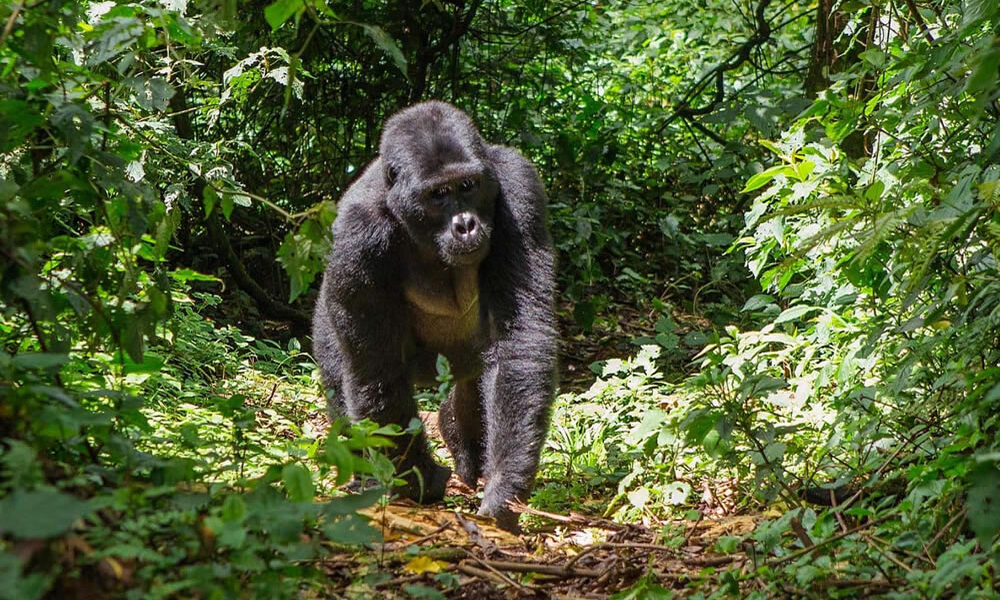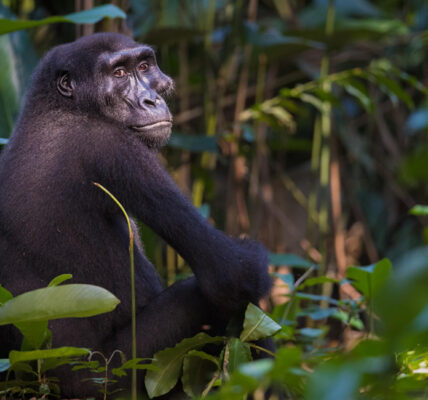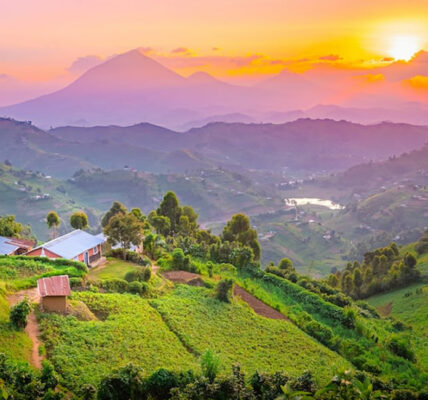A large number of the mountain gorillas in Rwanda were saved and became popular because of an American zoologist Dian Fossey who had been doing research on the rare species in form the Congo forest. After fleeing Congo because of insecurity and establishing her research center in Rwanda, she was murdered but her research center still remained and has done a great conservation job of the mountain gorillas.
When going for a gorilla safari expedition especially in volcanoes national park, one needs to be well guarded by most notably wearing a garment that covers his/her biggest body percent because the equatorial jungle has many plants with rough leaves covered with stinging hairs, soft muddy grounds that can suck a grown up individual and wild animals that could easily attack tourists without a game ranger or any one protecting them.
The equatorial forests in Rwanda are homes to human beings closest wild animals the primates and apes; chimpanzees and mountain gorillas that share 98.8 and 94.6 percent DNA respectively with human beings. The Rwandan Government is so proud of its touristic creatures especially those in the Volcanoes Park Rwanda and this explains why their photos and images are seen at the airports lounges, bank notes and on packets of Rwanda’s agricultural exports like tea and coffee.
At least 96 gorilla permits are sold to tourist who flock the area eager to track the rare apes however lets first look at the courageous Dian Fossey who played an important role in the history of the mountain gorillas and ensured that she saved them from extinction. She flee from Congo forest in the 1960’s and established a gorilla research center but was later killed and she was buried near the grave of her favorite gorilla digit. This year will mark her 31st death anniversary.
Many guides say that the gorilla trek in Volcanoes National Park is a pilgrimage people walk because of their desire to pay tribute to the great works Dian Fossey did. Dian left San Francisco around 1963 for East Africa to discover more about the mountain gorillas. She first did her research in Congo but was forced to move to Rwanda because of the Flux in Congo at that time. After establishing her research center in Rwanda, she was commonly referred to as Nyiramacibiri by the local Rwandese around the area which meant ‘…a woman who lives alone in the mountains’.
The route people follow today is the one that Dian used while going to Kinigi village to get the required supplies she need to sustain her in the mountain. She would collect these supplies at least twice a month. While hiking the Virunga volcanoes in Rwanda, much effort is required and when it’s raining, heavy raindrops fall from the sky as well as lightning and thunder in the clouds. As you proceed, you reach a clear surface where Dian had constructed her house. All that remains today is just a destroyed foundation and sadly no one has ever been charged with her murder.
What is clearly noticed is that the campaign Dian Fossey took against poaching of the mountain gorillas earned her many enemies and any of them must have attacked and killed her but one thing is for sure; the Dian Fossey legacy still lives and works are clearly seen in the increase in the gorilla population in the area. The research center she started today employs over 120 people.



